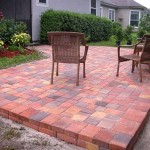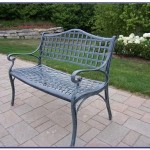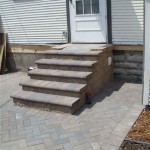How To Remove Green Algae From a Stone Patio
Green algae growth on stone patios is a common problem, particularly in damp and shaded areas. Algae not only looks unsightly but also creates a slippery surface, posing a safety hazard. Effective removal requires understanding the nature of the algae and employing the appropriate cleaning methods. This article details how to safely and effectively remove green algae from stone patios.
Understanding Algae Growth on Stone
Algae thrive in moist, porous surfaces like stone. Factors contributing to algae growth include shade, humidity, poor drainage, and organic debris like leaves and dirt. The microscopic spores are easily transported by wind and water, quickly colonizing suitable environments. Regular cleaning and maintenance are essential to prevent algae from gaining a foothold.
Preparing the Patio for Cleaning
Before beginning the cleaning process, it is vital to clear the patio of any furniture, planters, or other obstructions. This allows for unhindered access to the entire surface and prevents damage to these items during cleaning. Sweeping or using a leaf blower to remove loose debris, such as leaves, twigs, and dirt, will improve the effectiveness of the cleaning solutions.
Cleaning Methods for Algae Removal
Several methods can be employed to remove algae from stone patios. The best approach depends on the severity of the algae growth and the type of stone. It is always recommended to test any cleaning solution on an inconspicuous area first to ensure compatibility with the stone.
Pressure Washing
Pressure washing is a powerful method for removing stubborn algae and other surface grime. However, it's important to use the correct pressure setting. Excessive pressure can damage certain types of stone, particularly softer varieties. Start with a lower setting and gradually increase the pressure as needed. A wide fan tip distributes the pressure more evenly and reduces the risk of damage. Always maintain a consistent distance and avoid focusing the spray on one spot for too long.
Chemical Cleaning
Various chemical cleaners are available specifically designed for removing algae from outdoor surfaces. These products often contain bleach, sodium hypochlorite, or other algicides. Always follow the manufacturer's instructions carefully, including wearing appropriate safety gear such as gloves and eye protection. Dilute the cleaner according to the instructions and apply it evenly to the affected area. Allow the cleaner to dwell for the recommended time before scrubbing with a stiff-bristled brush. Thoroughly rinse the area with clean water after cleaning to remove any residual chemicals.
Natural Cleaning Solutions
For those seeking a more environmentally friendly approach, natural cleaning solutions can be effective in removing light to moderate algae growth. A mixture of white vinegar and water can be sprayed onto the affected area and left to dwell for a few hours before scrubbing and rinsing. Baking soda can also be used as a mild abrasive scrub. Mix baking soda with water to form a paste and apply it to the algae. Scrub gently with a brush and rinse thoroughly.
Preventing Algae Regrowth
Once the algae has been removed, preventative measures can be taken to minimize its return. Improving drainage around the patio will help to reduce moisture buildup. Trimming overhanging branches will increase sunlight exposure, which inhibits algae growth. Regularly sweeping or blowing away debris will prevent organic matter from accumulating and providing a food source for algae. Periodically applying a sealant specifically designed for patios can also help to protect the surface and prevent algae from taking hold.
Choosing the Right Cleaning Method
Selecting the appropriate cleaning method involves considering the type of stone, the severity of the algae growth, and environmental factors. For delicate stone surfaces, gentle scrubbing with a natural cleaning solution may be the best approach. Pressure washing is effective for tougher stains and larger areas but requires caution. Chemical cleaners offer a powerful solution for stubborn algae but should be used responsibly and with attention to safety precautions. Understanding the advantages and disadvantages of each method will facilitate informed decision-making.
Maintaining a Clean Patio
Regular maintenance is crucial for preventing algae from reoccurring. Sweeping or blowing away debris regularly, keeping the surface dry, and improving drainage are proactive steps. Periodic cleaning with a mild detergent and water can help to maintain a clean and algae-free patio. Promptly addressing any signs of algae growth will prevent the problem from escalating and requiring more intensive cleaning methods in the future. Establishing a consistent maintenance routine will contribute to the long-term beauty and safety of the patio.

How Do I Remove Green Algae From My Patio Stoneworld Oxfordshire

Best Tips On Cleaning Patio Slabs How To Get Rid Of Algae

Hg Algae And Mould Remover

Remove Algae And Lichen Off Patio Pavers Like Rick Wet Forget Blog

How To Clean Algae From A Concrete Patio With 4 Methods Js Brick Pavers

How To Stop Green Mould And Algae From Growing On Your Patio Pro Kleen

How To Clean Your Patio And Kill Moss Red

Best Tips On Cleaning Patio Slabs How To Get Rid Of Algae

Why Is My Patio Going Green And How Can I Stop It

Patio Turning Green How To Fight Algae
See Also








